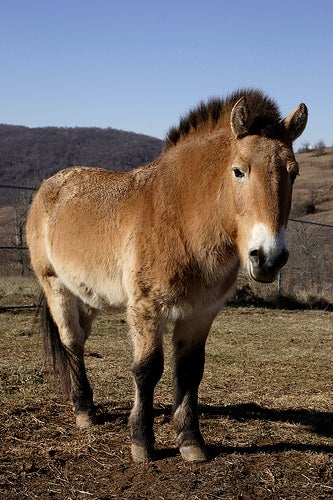National Zoo Mourns Loss of Przewalski's Horse
The Smithsonian's National Zoo is mourning the death of its 23-year-old Przewalski's horse, a male named Rolles, who was humanely euthanized this morning. A final pathology report will provide more information.
In July, keepers observed that Rolles had some nasal discharge. Zoo veterinarians prescribed oral antibiotics, which helped initially. About 10 days later, he developed a visible mass on the side of his nose. Rolles also lost weight and rubbed the affected area, an indication that the mass caused him discomfort.
Zoo veterinarians, in consultation with an outside equine veterinarian, performed a full examination on Rolles, including X-rays and nasal endoscopy. The location of the tumor greatly limited the options for treatment. Animal care staff elected to humanely euthanize Rolles based on his poor long-term prognosis.
Born at the Bronx Zoo June 10, 1990, Rolles arrived at the National Zoo in 2008. Most zoo animals participate in a breeding program called the Species Survival Plan. The SSP scientists determine which animals to breed by considering their genetic makeup, nutritional and social needs, temperament and overall health. Rather than breed, Rolles served as a non-breeding companion for Rose Marie, the Zoo's 27-year-old female Przewalski's horse. He also acted as an educational ambassador for his species, illustrating the social nature and behavior of Przewalski's horses to scientists, keepers and Zoo visitors.
This species is considered endangered by the International Union for Conservation of Nature's Red List of Threatened Species. Scientists at the Zoo's Smithsonian Conservation Biology Institute recently celebrated a huge breakthrough for the survival of this species with the birth of a female Przewalski's horseâthe first born via artificial insemination. Visitors can see Rose Marie on exhibit adjacent to the Small Mammal House.

